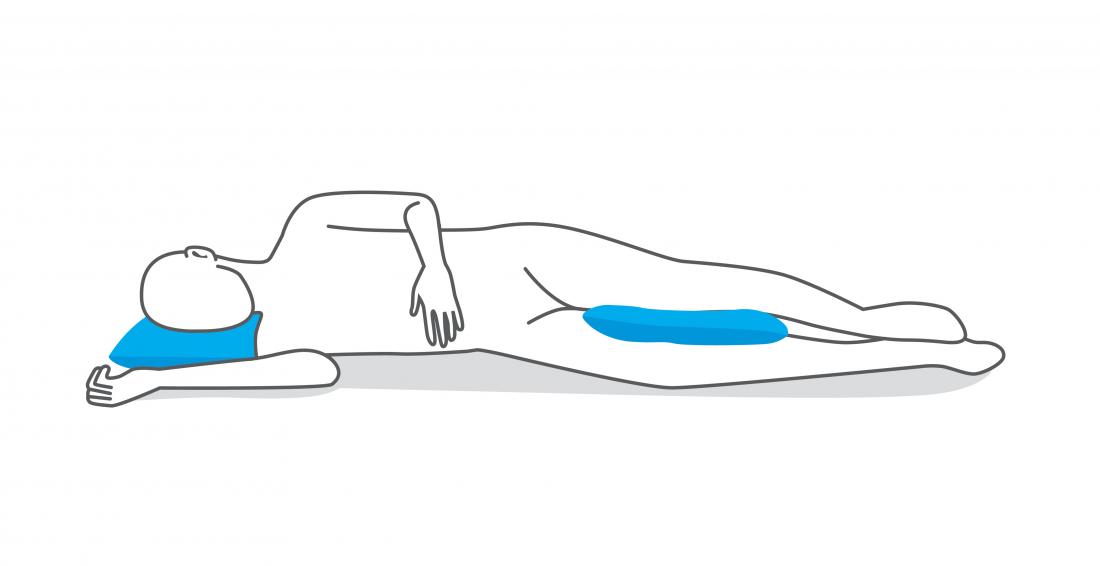All Categories
Featured
Table of Contents
- – Back Pain - Diagnosis And Treatment That Stops ...
- – Ways To Treat Chronic Back Pain Without Surger...
- – Back Pain - Treatment That Fit Into Your Busy ...
- – Home Remedies For Low Back Pain, As Simple As...
- – Home Remedies For Low Back Pain In 4 Minutes ...
- – Home Remedies For Lower Back Pain While Layi...
- – Fast And Effective Back Pain Home Remedies, ...
- – Ways To Treat Chronic Back Pain Without Surg...
Back Pain - Diagnosis And Treatment That Stops The Pain From The Comfort Of Your Own Home.
Diagnosis, Your doctor will examine your back and assess your ability to sit, stand, walk and lift your legs. Your doctor might also ask you to rate your pain on a scale of zero to 10 and talk to you about how well you're functioning with your pain. These assessments help determine where the pain comes from, how much you can move before pain forces you to stop and whether you have muscle spasms.
If there is reason to suspect that a specific condition is causing your back pain, your doctor might order one or more tests: These images show the alignment of your bones and whether you have arthritis or broken bones. These images alone won't show problems with your spinal cord, muscles, nerves or disks.
More Information, Show more related information Treatment, Most back pain gets better within a month of home treatment. However, everyone is different, and back pain is a complex condition. For many, the pain doesn't go away for a few months, but only a few have persistent, severe pain. Over-the-counter pain relievers and the use of heat might be all you need.
Ways To Treat Chronic Back Pain Without Surgery That Fit Into Your Busy Schedule.
Continue your activities as much as you can tolerate. Try light activity, such as walking and activities of daily living. Stop activity that increases pain, but don't avoid activity out of fear of pain. If home treatments aren't working after several weeks, your doctor might suggest stronger medications or other therapies.
Take these medications only as directed by your doctor. Overuse can cause serious side effects. If OTC pain relievers don't relieve your pain, your doctor might suggest prescription NSAIDs. If mild to moderate back pain doesn't improve with OTC pain relievers, your doctor might also prescribe a muscle relaxant. Muscle relaxants can make you dizzy and sleepy.

Finding Lower Back Pain Relief Nearly everyone will experience some form of back pain in his or her lifetime. The low back is the area behind the belly from the rib cage to the pelvis and is also called the lumbar region. Back pain is a major cause of missed work.
Back Pain - Treatment That Fit Into Your Busy Schedule.
There are many treatments for low back pain. At Risk for Lower Back Pain? Low back pain can start in a person's early twenties and continue on throughout adulthood. Studies have shown that up to 80% of the general population are affected by low back pain (LBP) at some time during their lives.
Acute low back pain can appear suddenly after injury. Chronic back pain is defined as pain lasting more than three months. Consult a doctor if you have prolonged back pain longer than 72 hours. Low Back Pain and Serious Back Injuries Severe back pain after an injury should be evaluated by a health-care professional.
The sciatic nerve is a large nerve that runs down through the buttocks and extends down the back of the leg. Pressing on or pinching of the sciatic nerve causes shock-like or burning low back pain. Sometimes people feel as if the pain radiates down through the buttocks and down one leg, sometimes even reaching the foot.
Home Remedies For Low Back Pain, As Simple As Laying Down.
Sitting with proper support for the low back with shoulders back and even a foot rest can prevent low back pain. Proper balance on the feet when standing can also minimize the risk of developing low back pain while up. Herniated Discs and Low Back Pain The vertebrae, or bony building blocks of the spine, are cushioned by gel-like discs in between the vertebrae.
Traction, using pulleys and weights to lengthen and stretch the spine can result in temporary relief. Both techniques will not treat any underlying causes of back pain, but rather offer a temporary relief from lower back pain. Massage Therapy for Low Back Pain Studies have shown that massage treatments can help relieve chronic low back pain.
Massage therapy is limited, and would not be the most effective solution for patients with spinal complications, injuries, or disk problems since massage focuses on the release of muscle tension and not on the structure of the spine itself. Acupuncture for Low Back Pain Relief Acupuncture can be moderately effective for chronic low back pain.
Home Remedies For Low Back Pain In 4 Minutes Or Less.
Injections are intended for short-term use and should not be utilized for an extended period of time as they may worsen pain in the long run. For those with chronic pain or sever spinal injury, a nerve block may be utilized to prevent nerve conduction in a certain area. This essentially blocks all feeling from nerves.
Is it Time for Back Surgery? Back surgery is often a last resort when all other treatment options have been tried. Surgery may be considered an option to relieve pain caused by serious musculoskeletal injuries or nerve compression resulting from vertebrae shifting or collapsing. Back surgeries often have a long recovery period, and some patients may lose mobility and flexibility post-surgery.
As such, it is important for patients to talk with their physicians and know all of the risks associated with a procedure before undergoing back surgery. Physical Therapy for Back Pain Treatment Rehabilitation programs can not only help in the healing but also decrease the risk of reinjuring the low back.
Home Remedies For Lower Back Pain While Laying Down.
Tips to Strengthen Your Back Flexion and extension exercises are commonly used to prevent low back pain. Be sure to review with the doctor any program you are considering. Easy Low Back Exercises Ankle Pumps: Lie on your back and move ankles up and down. Heel Slides: Lie on your back and bend then straighten the knees one at a time.

Back pain is one of the most common physical ailments. Studies show that eight in 10 Americans have back pain at some point in their lives, usually in the lower back. Your might have sprained it while working in the yard or cleaning house. Or your back might hurt from an old sports injury or a chronic condition such as arthritis or ankylosing spondylitis.
That also goes for pain that won’t go away. But sometimes you can treat nagging pain and discomfort on your own. Wilson Ray, MD, chief of spine surgery for the Department of Neurological Surgery at Washington University School of Medicine in St. Louis, says home remedies ” tend to be better when they're combined than [when done] alone.”1.
Fast And Effective Back Pain Home Remedies, Say Goodbye To Stress And Anxiety.

But this is probably the first thing your doctor will recommend.”A common misconception in patients with isolated back pain is that they can’t stay active,” Ray says. Try to keep up with your usual level of daily activity and movement. It can be a brisk 30-minute walk or circling the block with your dog.
But if you’re older or worried about overdoing it, you can stretch and do your strengthening exercises later in the day when your body is warmed up.Yoga, Pilates, and tai chi are just a few of the ways to strengthen your core and the muscles around your hips. One exercise that targets your entire upper and lower back is to lie on your tummy and lift up your legs and arms in the flying position.
Quit Smoking, Research suggests that if you smoke, you may be four times more likely than nonsmokers to have degenerative disk disease or other spine problems. Nicotine in cigarettes and other tobacco products can weaken your spinal bones and take away vital nutrients from the spongy disks that cushion your joints.
Ways To Treat Chronic Back Pain Without Surgery In 10 Minutes Or Less.
6. Try Ice and Heat, You may have heard that one is better than the other for relief from back pain. The short answer is that the best option is whichever works for you.“Some people come in and they swear by heat or ice,” Ray says. “You might want to try both, and you’ll probably find that one is better suited for your relief.”Usually, ice is best if your back is bothered by swelling or inflammation.
True to their name, NSAIDs help lower inflammation that can lead to swelling and tenderness. But acetaminophen does not relieve inflammation. You can reach for either type of pain reliever for occasional back pain. NSAIDs may work a bit better, Hemani says, if you have arthritis of the spine or other inflammatory conditions.
Table of Contents
- – Back Pain - Diagnosis And Treatment That Stops ...
- – Ways To Treat Chronic Back Pain Without Surger...
- – Back Pain - Treatment That Fit Into Your Busy ...
- – Home Remedies For Low Back Pain, As Simple As...
- – Home Remedies For Low Back Pain In 4 Minutes ...
- – Home Remedies For Lower Back Pain While Layi...
- – Fast And Effective Back Pain Home Remedies, ...
- – Ways To Treat Chronic Back Pain Without Surg...
Latest Posts
Back Pain - Causes, Exercises, Treatments, Say Goodbye To Stress And Anxiety.
Ways To Treat Chronic Back Pain Without Surgery In As Little 10 Minutes Or Less.
Back Pain - Treatment In 9 Minutes Or Less.
More
Latest Posts
Back Pain - Causes, Exercises, Treatments, Say Goodbye To Stress And Anxiety.
Ways To Treat Chronic Back Pain Without Surgery In As Little 10 Minutes Or Less.
Back Pain - Treatment In 9 Minutes Or Less.